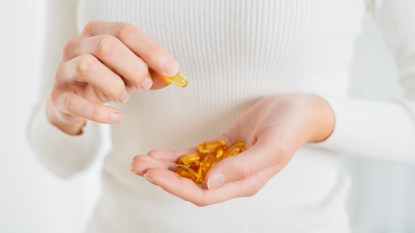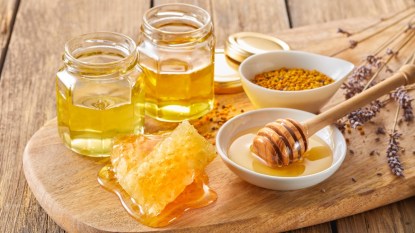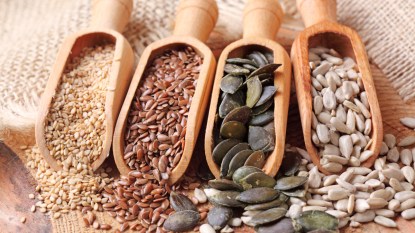A Forager and a Nutritionist Team Up to Reveal the Natural Medicine in Your Own Backyard
Edible medicinal plants can ease stress, insomnia, hot flashes and more — for free!
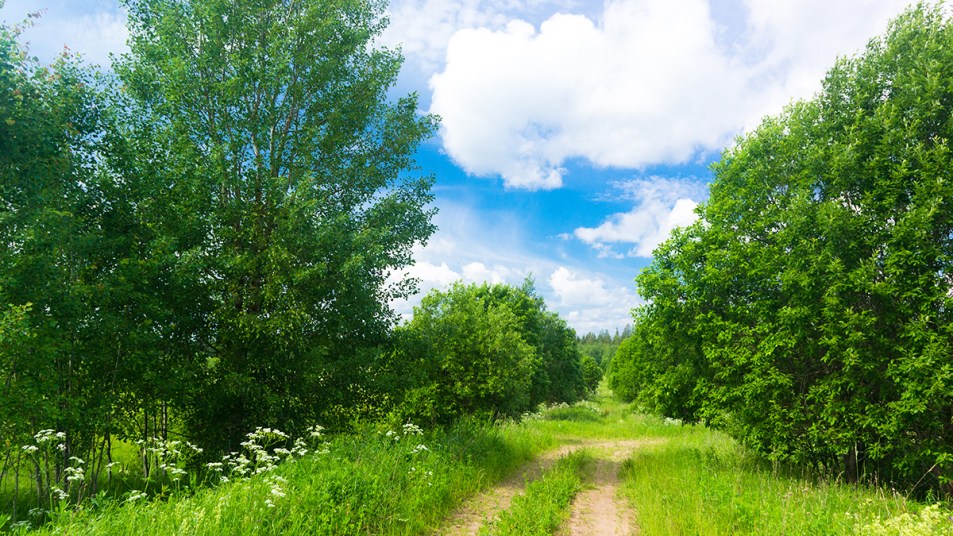
Foraging is the process of identifying and harvesting wild plants, berries, nuts, roots and seeds to eat and to use as health remedies. While humans had been foragers by necessity for millennia up until supermarkets and health clinics sprung up, this ancient practice is now a popular way to eat smarter and improve your health.
Once you learn which plants growing wild in nature you can eat and use, you’ll find yourself foraging, too! And it doesn’t matter where you live. You can practice foraging virtually anywhere — a park, forest, the side of the road and even your own backyard. To help get you started, here’s how to find six edible plants that are not only delicious, but have study-backed health benefits, including cooling hot flashes, improving sleep and balancing blood sugar.
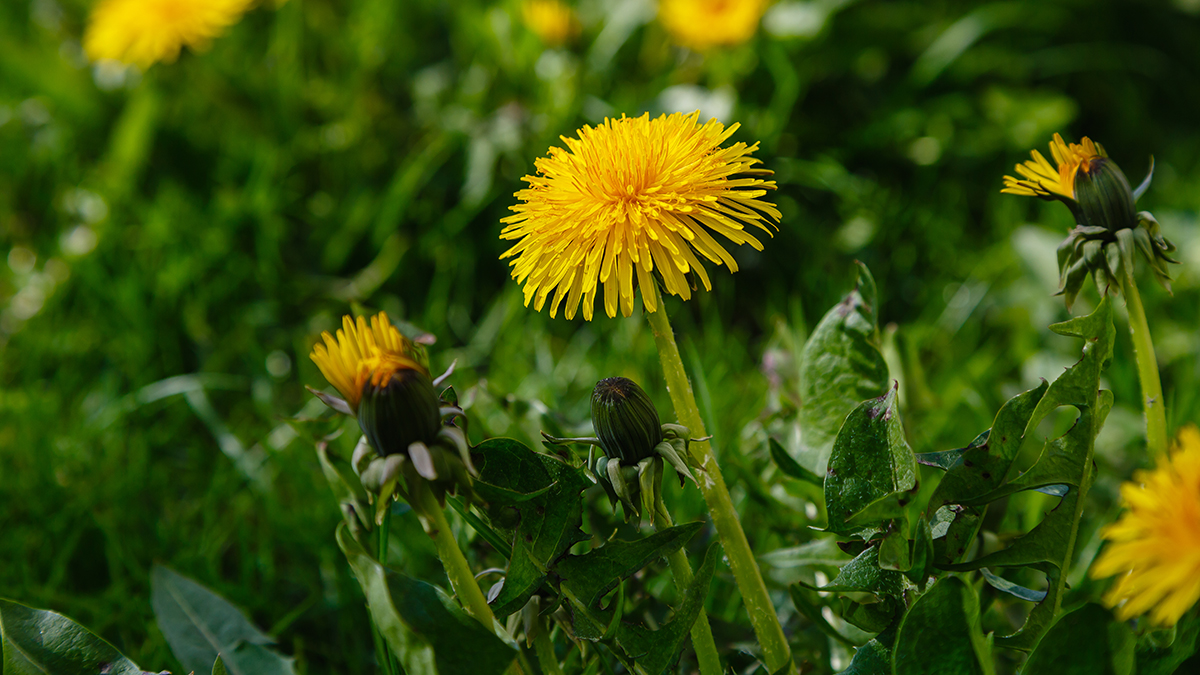
Sleep better with dandelion fritters
“They may seem like a nuisance weed to some, but dandelions are delicious and can be eaten from root to flower,” says Minnesota-based foraging expert Maya Bolduan of TikTok’s mayakindamischief.
“This ‘weed’ is actually a healing edible herb, and it’s been used for centuries worldwide as a liver tonic and blood purifier,” adds natural-health expert Ann Louise Gittleman, PhD. Eating dandelions has also been shown to help you sleep longer and deeper. Credit the prebiotic fiber in the plant. Scientists from the University of Colorado Boulder say the unique fiber helps the gut churn out compounds that regulate your circadian rhythm so you get drowsier at bedtime. Plus, it helps you experience more non-rapid eye movement sleep (where you get deeper rest) as well as rapid-eye-movement or REM sleep (a critical point during sleep when study authors say your body recovers from stress).
To get the perks, Gittleman recommends pulling dandelions from your yard, washing and mixing with other greens as a base for salads. They can have a bitter flavor, so she suggests looking for small, vibrant green leaves, which are milder-tasting. Bolduan offers another idea: “You can batter and fry dandelion flowers for savory and slightly sweet fritters ” she says. Or try brewing up your own dandelion tea. (Click through for more ideas on how to cook with dandelion greens.)
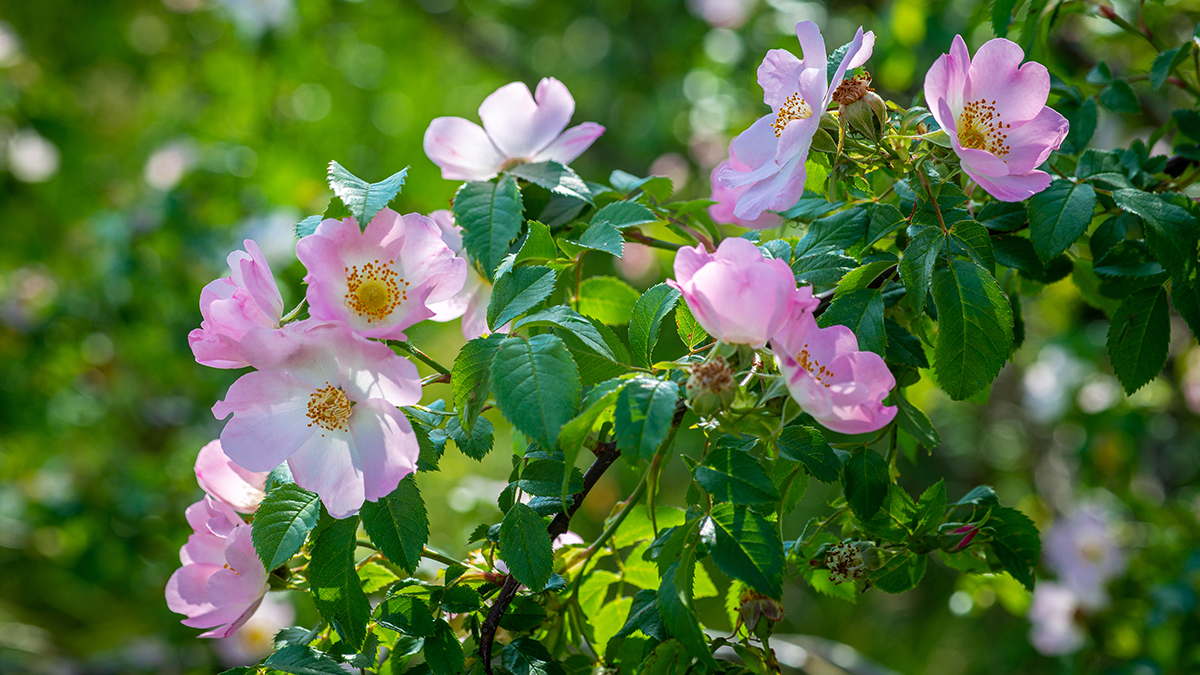
Dial down stress with rose petals
Roses aren’t only beautiful to look at — they’re edible, too! “You can consume the petals, rosehips (fruit of the rose) and leaves,” Bolduan points out. And you can make rose water with a few easy steps: “Gather and gently clean your rose petals, place in a saucepan with just enough distilled water to cover them, simmer on low heat until they’re drained of all color, then strain.” The rose-infused liquid can be added to cake, jellies and teas for a floral flavor. And if you inhale the rose petals’ rich aroma as they simmer, you’ll feel calmer within just 3 minutes! Japanese scientists found that a rose scent decreases sympathetic nervous system activity (responsible for the fight-or-flight response) by 40% and reduce adrenaline (a stress hormone) by 30%.
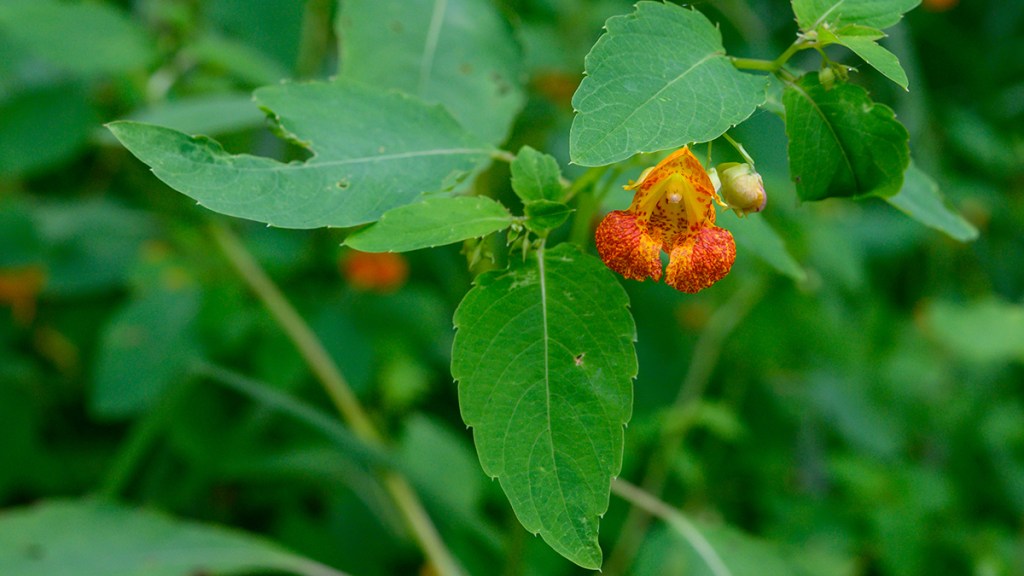
Prevent a poison ivy rash with jewelweed
“Adorned with bright orange and yellow cornucopia-shaped flowers, jewelweed is known for its ‘exploding’ seedpods that you can eat whole…if you can get them to your mouth before they burst open!” says Bolduan. Another use for jewelweed: “You can counteract a poison ivy rash by crushing jewelweed leaves and stems to release their juices, then immediately applying to affected areas after contact and allowing to dry,” she reveals. That’s good advice, say Ohio Northern University researchers. They tested this traditional Native American remedy and found that mashed jewelweed prevents itching and swelling thanks to saponins (used to make bubbles in soap) that bind to and remove the rash-causing compound urushiol. “Conveniently, jewelweed grows in the same areas as poison ivy, so there will likely be some nearby,” Bolduan notes. Or wash your skin with a poison ivy soap that contains jewelweed, such as Natrulo (Buy on Amazon.com, $9.95), which the same study found to be just as effective as the crushed plant.
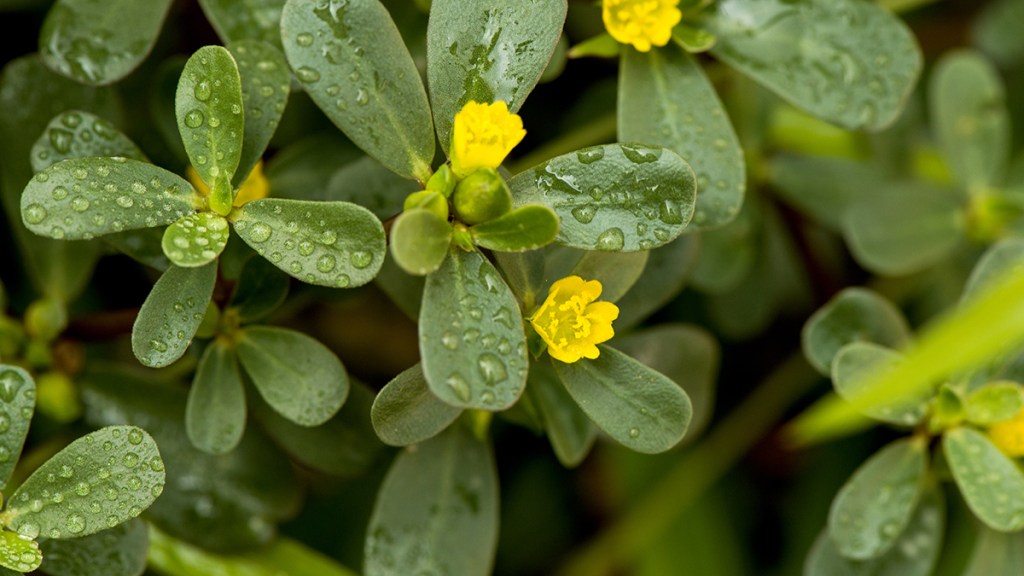
Lower triglycerides with purslane
“The thick, juicy leaves on purslane add a lemony crunch to sandwiches, tacos and salads,” says Bolduan. “They’re also considered a ‘superfood’ because they have the highest amount of omega-3 fatty acids of any land-based plant,” she reveals. So it’s no wonder that a review of 6 studies in the journal Phytotherapy Research found that regularly consuming purslane lowers harmful blood fats known as triglycerides by 19 points within 16 weeks. Omega-3 fats (including alpha lipoic acid, eicosapentaenoic acid and docosahexaenoic acid) speed the body’s removal of this bad fat so it can’t stick around and clog arteries. Other sources of omega-3 fatty acids include flaxseed oil, walnuts and salmon.
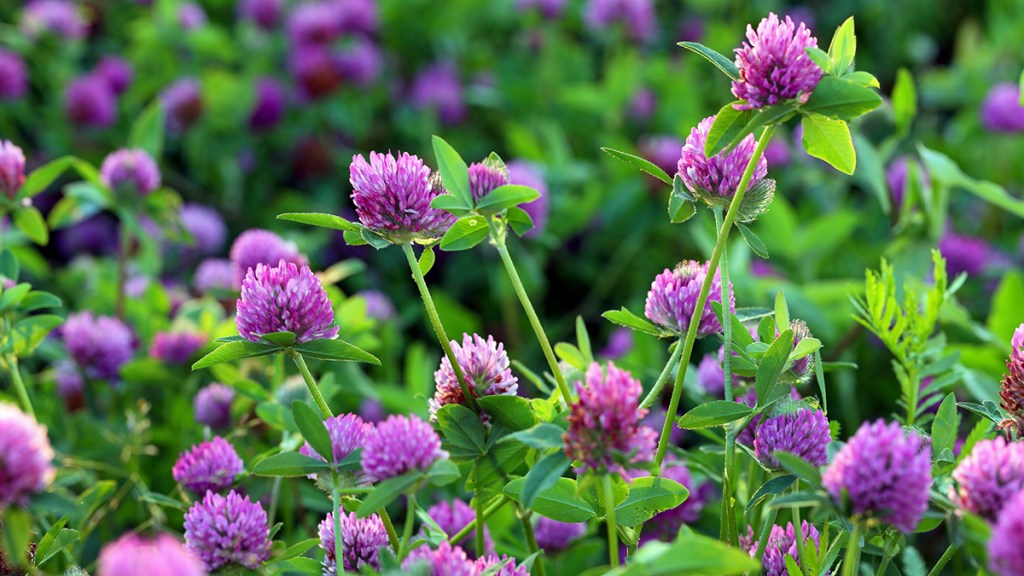
Cool hot flashes with red clover
“You can use the pink, purple or red pompom heads of red clover as an edible garnish, or dry them then steep them for 15 minutes to make a sweet-tasting tea,” says Bolduan. That’s good news if you want relief from menopause symptoms, since red clover is a proven remedy. In a study from Austria, women who took 80 mg. of a red clover supplement daily experienced a 74% reduction in hot flashes, a 72% reduction in night sweats and 75% reduction in overall menopause symptom intensity within 90 days. Credit goes to isoflavones (a type of phytoestrogen) in red clover that counteracts side effects of declining estrogen during menopause by mimicking this hormone. Also smart: Taking a red clover supplement, such as Promensil (Buy on iHerb.com, $22.95).
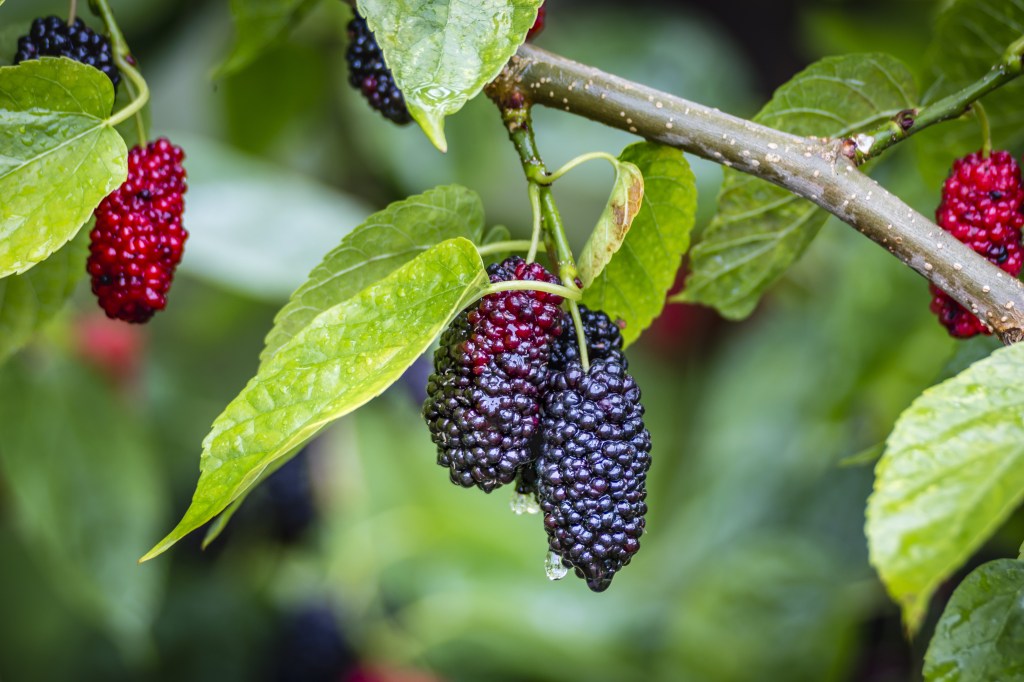
Mulberry leaves balance blood sugar
“Mulberries aren’t the only edible part of the mulberry tree!” says Bolduan. “Young mulberry leaves can be cooked, then stuffed with rice like grape leaves or dried to be used as tea.” Not only are the mildly sweet mulberry leaves tasty, but they also lower blood sugar spikes after meals thanks to a unique compound in them (1-deoxynojirimycin) that reduces the absorption of carbohydrates, say Polish researchers. And if you want to keep this tasty blood sugar-balance handy, you’re in luck: You can find prebagged mulberry leaf tea at health food stores and online retailers. Try Bio Nutrition White Mulberry Leaf Tea (Buy at Vitacost.com, $10.49). Note: Avoid if you have a latex allergy since the mulberry tree contains natural latex.

Gabrielle Lichterman is an award-winning author and journalist who has been reporting on health, personal finance and lifestyle topics for Woman’s World since 1997. Gabrielle is best known for pioneering the worldwide “cycle-syncing” movement that began with her groundbreaking women’s health book, 28 Days: What Your Cycle Reveals About Your Moods, Health & Potential. Learn more at GabrielleLichterman.com.
A version of this article originally appeared in our print magazine, Woman’s World.


